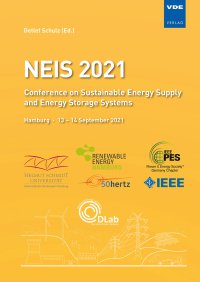Optimal operation of charging infrastructure and sector coupling technologies to supply residential units
Conference: NEIS 2021 - Conference on Sustainable Energy Supply and Energy Storage Systems
09/13/2021 - 09/14/2021 at Hamburg, Deutschland
Proceedings: NEIS 2021
Pages: 6Language: englishTyp: PDF
Authors:
Wortelker, Janna; Heuer, Maik; Hauer, Ines (Otto von Guericke University Magdeburg, Magdeburg, Germany)
Abstract:
With the current sharp increase in the number of registered battery electric vehicles, the demand for domestic charging points is growing. Particularly in the low-voltage grid, overloads could occur due to high simultaneity of the charging processes. In order to install sufficient domestic charging infrastructure, new grid-relieving measures have to be developed. The authors examine the potential of local electricity generation with sustainable sector coupling technologies regarding this aspect in Germany. For this purpose, the supply of residential units and charging infrastructure was modelled and simulated in a case study based on an apartment building. The modelled and evaluated systems were a fuel cell micro combined heat and power unit alone, supplemented by an adsorption chiller and extended by photovoltaics. The purpose of the adsorption chiller was to increase the load of the fuel cell. Photovoltaics was utilised to bridge the low production during summer. The charging was performed with and without regulation. The results show that the charging infrastructure could be supplied effectively, sustainably and lucratively with the fuel cell and especially with the addition of the photovoltaics. The addition of the adsorption chiller proved to be uneconomical using currently available systems.


